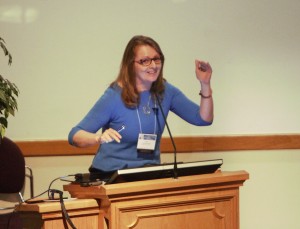A BYU research team is seeking new ways to teach social skills to individuals with autism.
BYU launched a study looking at two different ways to teach social skills to individuals with autism on Monday, Feb. 2. One of the methods includes outreach efforts to local community groups, including Boy Scout troops, church youth groups and youth sports teams. The BYU research team plans on teaching these groups about disabilities and how to include others.

Terisa Gabrielsen, a psychologist on BYU’s Autism Research Team, has done extensive research with social skills training and said the best way to learn social skills is from peers, “because that’s how everyone else does it.”
Gabrielsen directed a workshop on Friday, Jan. 20, where she delivered the university’s latest research on autism in adolescence to professionals. She emphasized the increased demand for answers regarding autism disorders and said there are not nearly enough autism professionals.
Spectrum Academy is a charter school started in Utah that focuses on children with high-functioning autism. Erin Butler, a speech-language technician at the Pleasant Grove location, commented on the unique social environment the academy provides. “Kids with autism are constantly in a world where they feel like they don’t belong, but at Spectrum there are kids whose challenges are similar to theirs,” Butler said.
Autism is a brain disorder. Gabrielsen noted that individuals experience different effects from the disorder. The severity of a case is measured on a spectrum. Although each case is unique there are common patterns of thinking. Affected individuals are able to focus on very small details for long periods of time, and they “notice changes you and I would never pick up in a million years,” Gabrielsen said.
The ability to focus deeply on single topics allows individuals at the top end of the spectrum to be successful in careers such as engineering, computer programming and the arts.
Optimal outcomes, as Gabrielsen put it, include that affected individuals are married with families. “By all measures they have a very successful life. You and I probably wouldn’t notice they had autism.”
Gabrielsen also noted there are jobs for individuals in the middle and lower end of the spectrum. “Repetitive jobs, that are typically very boring for us, might be exactly what they want to do and are very fulfilling for them.”
According to Gabrielsen, autism used to be rare. “It’s hard to look backwards and say for certain it’s increasing, but the physicians I work with have reported more and more patients with autism,” Gabrielsen said. “Once we started seeing it more often we got better at diagnosing; we changed the definition, and so we were identifying more and more people.”
Treatment for those affected by autism is determined by individual needs. Gabrielsen said the goal of any therapy plan is to get the individual into as normal a situation as possible. She noted in some cases individuals benefited from early intervention.
Gabrielsen specializes in early identification of autism, social skills training and interdisciplinary family support. She is part of three studies at BYU and has published her research regarding autism detection in the journal called “Pediatrics.”
Research participants are always needed, according to Gabrielsen. For more information about the latest research, autism resources or how to participate in a study conducted by BYU’s Autism Research Team, visit autism.byu.edu.




